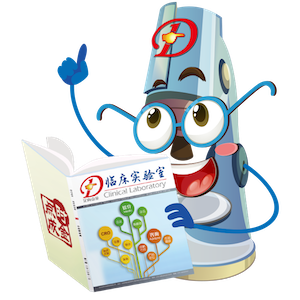血小板囊泡的生理功能特征与人体疾病诊治临床应用价值
作者:刘曹毅 林宝钗 高阳 刘鱼
【摘要】血小板来源的胞外囊泡(platelet-derived extracellular vesicles,PEVs)是血小板被激活或凋亡后产生的直径在40nm-1μm的亚细胞双层膜结构,是血浆中含量最丰富的的囊泡。PEVs中包括各种生物活性分子,例如粘附分子、化学和细胞因子、凋亡调节分子、miRNA、凝血因子、酶、补体蛋白和生物活性脂质等,因此参与多种重要的生理及病理过程,包括血栓与止血,免疫应答与炎症,血管生成与伤口愈合以及肿瘤发生、发展与转移等。本文对血小板来源囊泡的生物学特征、功能、作用机制及临床应用等研究进展进行简要综述。
【关键词】胞外囊泡;血小板;生物标志物;药物载体
胞外囊泡(extracellular vesicles,EVs)为直径约40nm-1μm的亚细胞双层膜结构,在细胞间的信息通讯和物质传导中起着重要作用[1]。体内绝大多数细胞,包括免疫细胞、内皮细胞、干细胞、癌细胞、神经细胞等,均可分泌EVs[2, 3]。血液中EVs主要由红细胞,白细胞,血小板,巨核细胞和内皮细胞等释放[4],其中最丰富的是血小板来源的胞外囊泡(platelet-derived extracellular vesicles,PEVs)。研究表明,健康人血浆中PEVs占所有囊泡的70%至90%[5, 6]。PEVs中包括各种生物活性分子,例如粘附分子、化学和细胞因子、凋亡调节分子、miRNA等,另外还包括凝血因子、酶、补体蛋白和生物活性脂质[5]等,因此参与多种重要的病理生理过程,包括血栓与止血,免疫应答与炎症,血管生成与伤口愈合,肿瘤发生、发展与转移等[7]。本文对血小板来源囊泡的生物学特征、功能、作用机制及临床应用等研究进展进行简要综述。
一、血小板囊泡的生物学特征
血小板来源的囊泡(PEVs)直径为40-1000nm。根据粒径和来源,PEVs可分为两类:外泌体(exosomes),直径约40-100nm,通过胞吐作用从多泡体(multivesicular bodies,MVBs)和α颗粒中释放;微囊泡(microvesicles, MVs),直径约100-1000nm,也称为胞外体(ectsomes),通过细胞质膜出芽而释放[8]。另外,根据结构PEVs又可分为三类:单层膜结构的PEVs;多泡状的PEVs,即内部含有多个小泡的大囊泡;以及含有各种细胞器的高电子密度的PEVs[7]。
PEVs的表面分子、内含成分及它们与病理生理过程及疾病的关系是当前研究的热点。PEVs表面表达多种分子,包括血小板内皮粘附分子(PECAM-1;CD31),CD41(GpIb),CD42a,CD62p(P选择素),血小板因子4(PF4)和糖蛋白IIb/IIIa(GPIIb/IIIa)等[8]。已有研究表明,PEVs中包含生长因子、细胞因子、趋化因子以及促凝因子和抗凝因子,促炎因子和抗炎因子,促血管生成和抗血管生成因子,脂质和核酸(mRNA和miRNA)等[9]。通过PEVs蛋白组学研究[10-12]可对细胞生理过程中或疾病状况中PEVs的功能进行分析,也可为疾病生物标记物的研究提供基线数据。研究发现,PEVs中的活性成分与动脉粥样硬化、癌症等疾病具有密切关系[12]。对不同大小PEVs的蛋白组学和功能分析表明,PEVs可按大小进行分类,不同大小类别PEVs的蛋白质成分,蛋白质/脂质比率以及对血小板和内皮细胞的功能影响均不同。当前对于PEVs中的RNA成分的研究还较少。有研究对PEVs中的circRNA进行丰度检测,在微囊泡中鉴定了1117个circRNA,在外泌体中鉴定了154个circRNA[13]。研究表明,PEVs是将miRNA转移至细胞并调节靶细胞基因表达的重要转运载体[14]。PEVs具有特定的miRNA图谱,一项研究在来自五个供体的PEVs中发现了182种miRNA,其中48种在五个供体中共同表达[15]。
不同血小板激活剂(Ca2+载体,二磷酸腺苷,凝血酶,胶原蛋白,肾上腺素等)诱导血小板产生PEVs的机制各不相同,产生的PEVs在数量[8, 16-18]、大小、形态[7]、膜分子和特定标志物的表达[18-20]及内含物[8, 17]方面都有差异,因此具有不同的功能。研究表明,不同性别[21-23]、年龄[24]的健康人血浆中PEVs的数量呈差异性分布。在疾病状态下如血栓、炎症、感染和肿瘤等,PEVs的数量、内含物及表面标志物也会发生变化。
二、血小板囊泡的功能与生理病理机制
PEVs通过细胞间的信号转导参与多种重要的生理学和病理学过程,包括凝血与止血、血管生成、炎症、免疫调节、病毒蛋白转运和肿瘤进展等[25]。PEVs主要通过以下机制影响靶细胞的生物学功能:(1)通过与靶细胞表面表达的PEVs特定配体(例如生长因子和生物活性脂质)结合形成“信号复合物”来刺激靶细胞;(2)表面受体如粘附分子,膜受体的细胞间转移;(3)将蛋白质和生物活性脂质、可能引起细胞的表观遗传重编程的mRNA、转录因子输送到靶细胞中。 此外,PEVs还可作为传递传染性颗粒(如HIV,病毒)以及传递完整细胞器(如线粒体等)的载体[26]。
1. 凝血与止血:PEVs具有促凝和抗凝的双重特性,是调节凝血系统不可或缺的部分[27]。血小板在凝血与止血中起着核心作用,但有文献表明PEVs携带血栓前蛋白Annexin-V,X因子和凝血酶原,其凝血能力比活化血小板高50至100倍[28]。PEVs凝血能力强可能与其表面磷脂酰丝氨酸(Phosphatidylserine,PS)的高表达有关。磷脂酰丝氨酸是在血小板质膜的内表面上发现的带负电荷的分子,该分子会暴露在PEVs的表面。磷脂酰丝氨酸为肌张力酶和凝血酶原酶凝固复合体形成的促凝血结合位点,因此表面表达磷脂酰丝氨酸的PEVs会增加凝血酶生成的速度和程度,促进血栓形成[29]。在健康个体中,PEVs上整合素αIIbβ3(CD41/CD61)也会支持纤维蛋白凝块的形成[30]。通过释放PEVs,血小板可以实现功能性自分泌自我扩增的机制来发挥其促凝血潜能[31]。另一方面,PEVs表面高表达CD41分子,它可通过不依赖TF和VII因子的途径产生低水平的凝血酶,该水平的凝血酶会激活蛋白C而发挥抗凝作用[32]。这表明PEVs不仅是促凝剂,同时通过抗凝蛋白维持凝血和抗凝的平衡参与凝血调节。
PEVs也参与了各种凝血和出血性疾病的发生发展。Castaman’s缺陷症是一种PEVs生成能力缺乏的疾病,患者有出血倾向。在这些患者中未检测到凝血酶原活性或PEVs内在特性的改变,表明PEVs的基础水平在凝血中具有潜在贡献[33]。相反,患有Scott综合征的患者PEVs计数正常,但促凝血酶原凝血酶活性降低[34]。这些患者中的PEVs由于PS向膜易位的缺陷而显示出受损的凝血能力。PEVs在其它出血性疾病中的潜在作用也有报道,例如免疫性血小板减少性紫癜(immune thrombocytopenic purpura,ITP)。与有症状的ITP患者相比,无症状患者的PEVs水平更高,表明PEVs可能在该疾病中具有保护作用[35]。此外,研究表明,尽管ITP患者血小板计数低,但仍具有促凝血作用,部分原因可能是血液中PEVs水平升高,在一定程度上减轻了血小板被破坏所造成的出血倾向[36]。PEVs可通过促进凝血和维持组织完整性来帮助克服与ITP相关的凝血缺陷。然而,在一些ITP患者中,高水平的PEVs也与血栓形成风险升高相关[37]。
此外,在最新的一项研究中报道血栓形成过程中血小板的活化和消耗导致大量血小板衍生微粒(platelet derived microparticles,PMPs)的释放,富含miRNA miR-1915-3p的PMPs能以正反馈方式影响造血干/祖细胞(hematopoietic stem/progenitor cells,HSPC),诱导巨核细胞的分化和血小板的生成[15]。
2. 炎症及免疫调节:根据表面分子,内含物和微环境的不同,PEVs可在炎症中发挥促炎或抗炎双向所用[5]。PEVs通过释放趋化因子募集白细胞,包括T细胞,B细胞和单核细胞,并通过结合P-选择素和P-选择素糖蛋白配体-1(PSGL1)促进单核细胞与内皮细胞之间的相互作用,进而促进炎症[38]。PEVs还可上调中性粒细胞和内皮细胞上的活化标志物,并在体内外增加白细胞与内皮细胞的黏附来增强组织损伤后的炎症反应[39]。花生四烯酸可以从PEVs转移到单核细胞和内皮细胞,从而上调环加氧酶2的表达和诱导前列腺素的产生,引起血管舒张并使炎症细胞到达感染部位[26, 40]。PEVs与单核细胞结合,可促进促炎性细胞因子IL-1β和肿瘤坏死因子TNF-α的升高[41]。PEVs还可通过CLEC5A受体激活中性粒细胞和巨噬细胞,诱导NET的形成并释放促炎细胞因子[42]。PEVs通过转移CD154分子到B细胞而参与调节适应性免疫,刺激抗原特异性IgG的产生并通过与CD4+T细胞的协同活性来调节生发中心的形成[43]。PEVs能够将在其表面表达的受体(即CD41,CD61,CD184,CD62P,PAR-1)转移至受体细胞(单核细胞,成肌细胞,造血干细胞)并诱导其粘附或增殖[44]。另外,PEVs将功能性gpIIb/IIIa(CD41/CD61)转移至嗜中性粒细胞,激活NF-κB信号通路,产生粒细胞-巨噬细胞集落刺激因子(GM-GSF)并增强炎症[45]。
另一方面,PEVs也能发挥抑制炎症的作用。PEVs可将花生四烯酸12-脂氧合酶转移至肥大细胞,增加炎症脂蛋白A4(LXA4)的负调节剂的合成[44, 46]。PEVs还能诱导幼稚CD4+T细胞分化为Foxp3+调节性T细胞,并且与T细胞孵育后可降低IFN-γ,TNF-α和IL-6的释放从而抑制炎症反应[47]。另外,PEVs可减弱酵母聚糖激活的巨噬细胞中TNF-α的释放,并修饰单核细胞向树突状细胞的分化,从而降低炎症和吞噬能力[48]。有文献提出,血小板活化产生PEVs的方式决定了所得PEVs对单核细胞的作用[49]。
PEVs在病毒感染中也发挥作用。与健康人相比,HIV感染患者的PEVs水平更高[50]。并且PEVs能够将CXCR4(一种介导HIV进入靶细胞的趋化因子受体)转移至CXCR4阴性细胞,从而使其易于感染X4 HIV菌株[51]。研究发现,多种病毒如流感病毒H1N1、HIV、登革热病毒等可以激活血小板促进PEVs的释放[52]从而影响血液中的PEVs水平。
3. 肿瘤:PEVs对肿瘤的发生发展也表现出促进和抑制的双向作用。PEVs对于肿瘤的促进作用主要体现在两个方面:一是促进肿瘤血管的生成,二是促进肿瘤细胞的迁移,侵袭和转移[26]。与PEV共同孵育后,金属蛋白酶1(MMP-1)从PEV中转移至癌细胞以及癌细胞中MMP-9,VEGF和IL-8 mRNA表达增加导致肿瘤微环境(The tumor microenvironment,TME)中血管生成的增加[53]。此外,来自α颗粒的PEVs成分(如VEGF,血小板衍生的生长因子和成纤维细胞生长因子)也具有促血管生成特性。基质金属蛋白酶(MMPs)是在血管内和血管生成之前参与细胞外基质(extracellular matrix,ECM)降解的主要酶。已显示PEVs可以促进MMP-2的分泌,尤其是在前列腺癌细胞中,从而促进血管侵袭[54]。PEVs作为磷脂酰丝氨酸的丰富来源,是免疫细胞上磷脂酰丝氨酸受体(phosphatidylserine receptor,PSR)的可能配体。PS-PSR途径的激活可抑制TME以及血液循环中的先天性和适应性免疫反应[55]。PEVs介导的miRNA转移可以影响免疫反应、胞吞作用、肿瘤血管生成,以及其他与癌症相关的过程[56, 57]。研究发现PEVs中含有的miR-126和miRNA-223与肿瘤的发生发展相关,miRNA-126刺激内皮细胞的VEGF依赖性增殖,而miRNA-223通过靶向内皮β1整联蛋白来抑制血管形成[58]。
另外,PEVs在多类细胞中具有转移miRNA和下调基因表达的能力,表明其本身可能具有抑癌作用。有研究报道PEVs可浸润人和小鼠的实体瘤,并在体内和体外将miRNA,尤其是miR-24传递给肿瘤细胞,诱导细胞凋亡并抑制肿瘤生长[56]。有研究表明,PEVs中miRNA-123和miRNA233数量增加,阻止了乳腺细胞系BT549的细胞周期并减少了细胞迁移[59]。
阿司匹林已被证明可用于抑制癌症的进展[60],这可能与服用阿司匹林导致血浆PEVs内含物中蛋白水平降低有关[61]。然而,阿司匹林具有多种副作用,包括出血风险增加、月经量大、恶心和呕吐等。通过抑制血小板释放PEVs而抑制癌细胞而不是抑制血小板的全部功能的新设计药物可能具有广泛的应用前景,并且其与肿瘤转移有关的PEVs的特异性靶向作用可避免因为对凝血功能的影响所导致的副作用。
4. 组织修复:众所周知,富血小板血浆(Platelet-rich plasma,PRP)是全血通过体外血液处理技术制备后,血小板含量高于全血水平的血浆成分,被广泛用于组织修复[62]。但是,对PRP诱导的组织修复的机制还尚未研究清楚[63]。随着对PEVs研究的深入,PEVs在组织修复方面的潜力已引起越来越多的关注。PEVs可以促进血管生成,从而在血管损伤后恢复内皮的完整性。组织受损后,血管内皮破损出血,引发体内凝血级联反应,血小板活化形成血凝块堵住破损血管内皮阻断出血。此后,一方面血小板激活释放的PEVs通过蛋白C灭活V因子,抑制凝血正反馈机制恢复凝血平衡[32]。另一方面,PEVs与血管内皮细胞受体特异性结合,促进内皮细胞增殖和分化,促进新生血管再生[64]。将分离出的PEVs应用于慢性创伤治疗中也显示出其具有类似PRP促进伤口愈合的功能,它能通过调控PI3K-Akt和MAPK-Erk信号通路以及相关蛋白(转化生长因子β和YAP)促进细胞增殖、迁移和血管生成[65]。有研究表明PEVs可为创伤患者输注止血、抑制血管通透性、减轻创伤内皮病变提供一种可行的产品[66]。用PEVs处理骨髓基质细胞(bone marrow stem cells,BMSCs)后,细胞增殖、迁移和成骨能力显著增强[63]。另外,研究表明PEVs可显著提高软骨细胞的增殖,抑制细胞凋亡[67]。
三、血小板囊泡的临床应用前景
PEVs的结构和组成,以及它们在机体生理及病理过程中的作用,展示出极有价值的临床应用前景,包括作为疾病的生物标志物,作为药物靶向载体以及作为单独的成分或产品治疗临床疾病[68]。
1. 疾病标志物:癌细胞能激活血小板促进PEVs的释放,多项研究表明乳腺癌、口腔癌、非小细胞肺癌、胰腺癌、肺癌和结直肠癌等患者体内的PEVs水平都有所升高[5, 69, 70]。并且根据癌症的进展,PEVs在癌症患者中具有独特的特征,并且可以用作反映疾病发展的复杂生物标志物[71]。表面表达PS的PEVs在许多心血管和代谢疾病中升高,包括动脉粥样硬化、急性冠状动脉综合征、高血压、心力衰竭、II型糖尿病和肥胖[72]。除了血栓和炎症性疾病外,在一些自身免疫和感染性疾病中PEVs水平也升高[20, 22, 23]。具有严重出血倾向的患者血浆PEVs水平降低,表面PEVs可能作为预测登革热相关出血的生物标志物[73]。被疟原虫感染的患者血液中PEVs含量增加,并且高PEVs浓度与急性疟疾症状的持续时间有关[74]。这些研究均表明PEVs可能成为诊断和监测癌症、慢性炎症性疾病、感染性疾病等的生物标志物。PEVs的数量及其内含物特征可能成为各种肿瘤不同临床阶段的诊断标志物及预后判断标志物,但其敏感度及特异性还需要进一步研究验证。
2. 药物载体:将药物包裹在囊泡内,可防止其在到达靶细胞之前遭到降解酶或化学物质的破坏,因此PEVs具有天然的药物载体潜力。从大量的自体血小板中将PEVs工程化后,可成为具有生物相容性和非免疫原性的新一代药物。研究表明PEVs可携带多种分子,包括大分子(DNA,RNA和蛋白质)以及小分子(阿霉素,姜黄素或紫杉醇)[75]。HL60,K562细胞(白血病细胞系)和胚细胞可通过P-选择蛋白配体和整联蛋白摄取载有阿霉素的PEVs。与游离的阿霉素相比,阿霉素-PEVs向白血病细胞转移的效率更高,可用于提高治疗效果并最大程度降低药物的副作用[76]。带有miR-126和miR-223的PEVs可增加BT549细胞对顺铂化疗的敏感性[59]。由于PEVs具有靶向肿瘤细胞的特性,利用PEVs将自杀基因mRNA和蛋白递送至靶组织,可以建立一种新型癌症治疗策略[77]。但是载药PEVs在临床的应用还需要对PEVs的临床功能的进一步理解以及囊泡操作技术的发展。
3. 临床治疗技术:PRP中包含大量的生物活性因子(生长因子、细胞因子、溶酶体)和黏附蛋白,可在机体损伤部位启动止血级联反应,促进结缔组织合成和血管重建[78]。近几年来,国内外PRP研究领域年发文量呈逐年上升趋势,PRP已被广泛地运用于临床多个领域[79]。
已有临床实验证明,在升主动脉弓和横主动脉弓修复术中使用PRP可在维持血清容量的同时,与鱼精蛋白协同恢复正常止血,维持组织微循环和内皮完整性;还能减少输血量,从而减少了急性肾功能衰竭等输血相关并发症的发生[80]。除此之外,当PRP和凝血酶联合使用时,能激活血小板内的α颗粒,释放大量的生长因子,包括血小板源性生长因子(PDGF)、转化生长因子-β(TGF-β)、血管内皮生长因子(VEGF)、胰岛素样生长因子-1(IGF-1)、表皮生长因子(EGF)、碱性成纤维细胞生长因子(bFGF)、白细胞介素-8(IL-8)、角质形成细胞生长因子(KGF)和结缔组织生长因子(CTGF)等[81-83],促进创面愈合、骨生长和组织修复[84]。PRP已证实可促进糖尿病患者骨折愈合[85]、改善骨性关节炎症状[86]及功能[87]、提高慢性半月板撕裂愈合率[88]、增强下颌骨骨折的骨再生[89]、增强拔牙窝的愈合[90]、减少急性肌肉撕裂的恢复运动时间[91]、促进跟腱撕裂的预后及功能恢复[92]、治疗脊髓损伤,减轻炎症,促进创面进入肉芽阶段[93]、促进子宫内膜过薄患者子宫内膜增殖、提高胚胎着床率和临床妊娠率[94]、治疗脱发[95, 96]等。
但是,目前PRP的作用机制尚未研究清楚。有研究发现,PRP-EVs中的生长因子的浓度明显高于PRP[97],所以推测PRP中最重要的作用成分大部分是贮存在PRP-EVs中。另外,多项研究表明,PRP-EVs在体内和体外治疗骨性关节炎[98]、慢性创面愈合[65]、延缓糖皮质激素诱发的股骨头坏死[99]等方面优于激活的PRP。因此,相较于PRP,PEVs可能具有无免疫原性且治疗效果更好副作用更小的优势。PEVs可能既是PRP诱导的组织再生机制的一部分,又是替代PRP的更好选择,但仍需要大量的临床研究证明PEVs具备替代甚至提升PRP临床疗效的能力[25]。
四、分析与展望
近年来,对于PEVs的研究报道越来越多,但许多研究中实验结果有较大差异甚至出现矛盾。这可能与各项研究中采用的PEVs的制备和纯化方法差异有关。研究发现,采用不同激活剂激活血小板获得的PEVs的数量及特征有明显差异,从而也可能表现出不同的作用。因此对不同PEVs制备及纯化方法的比较及标准化,对于PEVs研究结果的科学分析具有重要意义。
随着研究技术的进步,PEVs也取得了较大的研究进展。新的分离富集技术与检测方法的出现可以更好地确定PEVs的膜标记物表达和生物内含物特征,更好地分析PEVs分子结构、功能及其与多种疾病的关系,从而促进其作为生物标志物的临床应用。
由于不同的激活剂可以促进血小板产生不同特征的PEVs,而这些不同特征的PEVs可能具有不同的功能,因此采用特定激活剂激活血小板后产生的特定PEVs可能具有特定的临床治疗效果,因此具有较大的临床应用潜力。对各种PEVs的作用及机制的进一步研究,将促进PEVs作为临床治疗产品的发展。
由于PEVs具有较低的免疫原性、结构稳定、操作简便、具有靶向性且具有传递信息的能力,PEVs可能成为药物和生物分子(包括mRNA,miRNA和lncRNA)的潜在载体,许多研究也报道了PEVs作为药物载体的应用价值。但是,要将PEVs应用于临床治疗,还需要解决一些生物加工的技术问题,包括稳定的制备技术、储存条件、保存期限和质量控制等。
参考文献
ŻMIGRODZKA M, GUZERA M, MIŚKIEWICZ A, et al. The biology of extracellular vesicles with focus on platelet microparticles and their role in cancer development and progression[J]. Tumour biology: the journal of the International Society for Oncodevelopmental Biology and Medicine, 2016, 37(11): 14391-14401.
BADIMON L, SUADES R, FUENTES E, et al. Role of Platelet-Derived Microvesicles As Crosstalk Mediators in Atherothrombosis and Future Pharmacology Targets: A Link between Inflammation, Atherosclerosis, and Thrombosis [J]. Front Pharmacol, 2016, 7(293).
TURPIN D, TRUCHETET M E, FAUSTIN B, et al. Role of extracellular vesicles in autoimmune diseases[J]. Autoimmunity reviews, 2016, 15(2): 174-183.
MENCK K, BLECKMANN A, WACHTER A, et al. Characterisation of tumour-derived microvesicles in cancer patients' blood and correlation with clinical outcome[J]. Journal of extracellular vesicles, 2017, 6(1): 1340745.
ŻMIGRODZKA M, WITKOWSKA-PIŁASZEWICZ O, WINNICKA A. Platelets Extracellular Vesicles as Regulators of Cancer Progression-An Updated Perspective[J]. Int J Mol Sci, 2020, 21(15):
BURNOUF T, GOUBRAN H A, CHOU M L, et al. Platelet microparticles: detection and assessment of their paradoxical functional roles in disease and regenerative medicine [J]. Blood reviews, 2014, 28(4): 155-166.
PONOMAREVA A A, NEVZOROVA T A, MORDAKHANOVA E R, et al. Intracellular origin and ultrastructure of platelet-derived microparticles[J]. J Thromb Haemost, 2017, 15(8): 1655-1667.
AATONEN M T, OHMAN T, NYMAN T A, et al. Isolation and characterization of platelet-derived extracellular vesicles [J]. Journal of extracellular vesicles, 2014, 3
MELKI I, TESSANDIER N, ZUFFEREY A, et al. Platelet microvesicles in health and disease[J]. Platelets, 2017, 28(3): 214-221.
CAPRIOTTI A L, CARUSO G, CAVALIERE C, et al. Proteomic characterization of human platelet-derived microparticles [J]. Anal Chim Acta, 2013, 776(57-63.
GARCIA B A, SMALLEY D M, CHO H, et al. The platelet microparticle proteome [J]. Journal of proteome research, 2005, 4(5): 1516-1521.
DEAN W L, LEE M J, CUMMINS T D, et al. Proteomic and functional characterisation of platelet microparticle size classes [J]. Thromb Haemost, 2009, 102(4): 711-718.
PREUßER C, HUNG L-H, SCHNEIDER T, et al. Selective release of circRNAs in platelet-derived extracellular vesicles [J]. Journal of extracellular vesicles, 2018, 7(1): 1424473.
DIEHL P, FRICKE A, SANDER L, et al. Microparticles: major transport vehicles for distinct microRNAs in circulation [J]. Cardiovascular research, 2012, 93(4): 633-644.
QU M, ZOU X, FANG F, et al. Platelet-derived microparticles enhance megakaryocyte differentiation and platelet generation via miR-1915-3p[J]. Nature communications, 2020, 11(1): 4964.
DALE G L, REMENYI G, FRIESE P. Quantitation of microparticles released from coated-platelets [J]. J Thromb Haemost, 2005, 3(9): 2081-2088.
SHAI E, ROSA I, PARGUIñA A F, et al. Comparative analysis of platelet-derived microparticles reveals differences in their amount and proteome depending on the platelet stimulus [J]. Journal of proteomics, 2012, 76 Spec No.(287-296.
PEREZ-PUJOL S, MARKER P H, KEY N S. Platelet microparticles are heterogeneous and highly dependent on the activation mechanism: studies using a new digital flow cytometer [J]. Cytometry A, 2007, 71(1): 38-45.
VASINA E M, CAUWENBERGHS S, STAUDT M, et al. Aging- and activation-induced platelet microparticles suppress apoptosis in monocytic cells and differentially signal to proinflammatory mediator release [J]. Am J Blood Res, 2013, 3(2): 107-123.
AATONEN M, GRöNHOLM M, SILJANDER P R M. Platelet-derived microvesicles: multitalented participants in intercellular communication [J]. Semin Thromb Hemost, 2012, 38(1): 102-113.
UEBA T, HAZE T, SUGIYAMA M, et al. Level, distribution and correlates of platelet-derived microparticles in healthy individuals with special reference to the metabolic syndrome [J]. Thromb Haemost, 2008, 100(2): 280-285.
ROBERT S, PONCELET P, LACROIX R, et al. Standardization of platelet-derived microparticle counting using calibrated beads and a Cytomics FC500 routine flow cytometer: a first step towards multicenter studies? [J]. J Thromb Haemost, 2009, 7(1): 190-197.
TOTH B, NIKOLAJEK K, RANK A, et al. Gender-specific and menstrual cycle dependent differences in circulating microparticles [J]. Platelets, 2007, 18(7): 515-521.
VAN DER ZEE P M, BIRó E, KO Y, et al. P-selectin- and CD63-exposing platelet microparticles reflect platelet activation in peripheral arterial disease and myocardial infarction [J]. Clin Chem, 2006, 52(4): 657-664.
TAO S-C, GUO S-C, ZHANG C-Q. Platelet-derived Extracellular Vesicles: An Emerging Therapeutic Approach [J]. Int J Biol Sci, 2017, 13(7): 828-834.
DOVIZIO M, BRUNO A, CONTURSI A, et al. Platelets and extracellular vesicles in cancer: diagnostic and therapeutic implications [J]. Cancer Metastasis Rev, 2018, 37(2-3): 455-467.
KERRIS E W J, HOPTAY C, CALDERON T, et al. Platelets and platelet extracellular vesicles in hemostasis and sepsis [J]. Journal of investigative medicine : the official publication of the American Federation for Clinical Research, 2020, 68(4): 813-820.
SINAURIDZE E I, KIREEV D A, POPENKO N Y, et al. Platelet microparticle membranes have 50- to 100-fold higher specific procoagulant activity than activated platelets [J]. Thromb Haemost, 2007, 97(3): 425-434.
HEEMSKERK J W, MATTHEIJ N J, COSEMANS J M. Platelet-based coagulation: different populations, different functions [J]. J Thromb Haemost, 2013, 11(1): 2-16.
ZUBAIROVA L D, NABIULLINA R M, NAGASWAMI C, et al. Circulating Microparticles Alter Formation, Structure, and Properties of Fibrin Clots [J]. Scientific reports, 2015, 5(17611.
MAUSE S F. Platelet microparticles: reinforcing the hegemony of platelets in atherothrombosis [J]. Thromb Haemost, 2013, 109(1): 5-6.
BERCKMANS R J, NIEUWLAND R, BöING A N, et al. Cell-derived microparticles circulate in healthy humans and support low grade thrombin generation [J]. Thromb Haemost, 2001, 85(4): 639-646.
CASTAMAN G, YU-FENG L, RODEGHIERO F. A bleeding disorder characterised by isolated deficiency of platelet microvesicle generation [J]. Lancet, 1996, 347(9002): 700-701.
Scott syndrome: an inherited defect of the procoagulant activity of platelets [J]. Platelets, 1997, 8(2): 117-124.
ÁLVAREZ-ROMáN M T, FERNáNDEZ-BELLO I, JIMéNEZ-YUSTE V, et al. Procoagulant profile in patients with immune thrombocytopenia [J]. British journal of haematology, 2016, 175(5): 925-934.
FONTANA V, JY W, AHN E R, et al. Increased procoagulant cell-derived microparticles (C-MP) in splenectomized patients with ITP [J]. Thrombosis research, 2008, 122(5): 599-603.
SEWIFY E M, SAYED D, ABDEL AAL R F, et al. Increased circulating red cell microparticles (RMP) and platelet microparticles (PMP) in immune thrombocytopenic purpura [J]. Thrombosis research, 2013, 131(2): e59-63.
ŠIBíKOVá M, ŽIVNý J, JANOTA J. Cell Membrane-Derived Microvesicles in Systemic Inflammatory Response [J]. Folia biologica, 2018, 64(4): 113-124.
KURAVI S J, HARRISON P, RAINGER G E, et al. Ability of Platelet-Derived Extracellular Vesicles to Promote Neutrophil-Endothelial Cell Interactions [J]. Inflammation, 2019, 42(1): 290-305.
BARRY O P, KAZANIETZ M G, PRATICò D, et al. Arachidonic acid in platelet microparticles up-regulates cyclooxygenase-2-dependent prostaglandin formation via a protein kinase C/mitogen-activated protein kinase-dependent pathway [J]. The Journal of biological chemistry, 1999, 274(11): 7545-7556.
BEI J J, LIU C, PENG S, et al. Staphylococcal SSL5-induced platelet microparticles provoke proinflammatory responses via the CD40/TRAF6/NFκB signalling pathway in monocytes [J]. Thromb Haemost, 2016, 115(3): 632-645.
SUNG P S, HUANG T F, HSIEH S L. Extracellular vesicles from CLEC2-activated platelets enhance dengue virus-induced lethality via CLEC5A/TLR2 [J]. Nat Commun, 2019, 10(1): 2402.
SPRAGUE D L, ELZEY B D, CRIST S A, et al. Platelet-mediated modulation of adaptive immunity: unique delivery of CD154 signal by platelet-derived membrane vesicles [J]. Blood, 2008, 111(10): 5028-5036.
EDELSTEIN L C. The role of platelet microvesicles in intercellular communication [J]. Platelets, 2017, 28(3): 222-227.
SALANOVA B, CHOI M, ROLLE S, et al. Beta2-integrins and acquired glycoprotein IIb/IIIa (GPIIb/IIIa) receptors cooperate in NF-kappaB activation of human neutrophils [J]. The Journal of biological chemistry, 2007, 282(38): 27960-27969.
TANG K, LIU J, YANG Z, et al. Microparticles mediate enzyme transfer from platelets to mast cells: a new pathway for lipoxin A4 biosynthesis [J]. Biochemical and biophysical research communications, 2010, 400(3): 432-436.
DINKLA S, VAN CRANENBROEK B, VAN DER HEIJDEN W A, et al. Platelet microparticles inhibit IL-17 production by regulatory T cells through P-selectin [J]. Blood, 2016, 127(16): 1976-1986.
SADALLAH S, EKEN C, MARTIN P J, et al. Microparticles (ectosomes) shed by stored human platelets downregulate macrophages and modify the development of dendritic cells [J]. Journal of immunology (Baltimore, Md : 1950), 2011, 186(11): 6543-6552.
VAJEN T, MAUSE S F, KOENEN R R. Microvesicles from platelets: novel drivers of vascular inflammation [J]. Thromb Haemost, 2015, 114(2): 228-236.
CORRALES-MEDINA V F, SIMKINS J, CHIRINOS J A, et al. Increased levels of platelet microparticles in HIV-infected patients with good response to highly active antiretroviral therapy [J]. Journal of acquired immune deficiency syndromes (1999), 2010, 54(2): 217-218.
ROZMYSLOWICZ T, MAJKA M, KIJOWSKI J, et al. Platelet- and megakaryocyte-derived microparticles transfer CXCR4 receptor to CXCR4-null cells and make them susceptible to infection by X4-HIV [J]. AIDS (London, England), 2003, 17(1): 33-42.
BOILARD E, PARé G, ROUSSEAU M, et al. Influenza virus H1N1 activates platelets through FcγRIIA signaling and thrombin generation [J]. Blood, 2014, 123(18): 2854-2863.
JANOWSKA-WIECZOREK A, WYSOCZYNSKI M, KIJOWSKI J, et al. Microvesicles derived from activated platelets induce metastasis and angiogenesis in lung cancer [J]. International journal of cancer, 2005, 113(5): 752-760.
DASHEVSKY O, VARON D, BRILL A. Platelet-derived microparticles promote invasiveness of prostate cancer cells via upregulation of MMP-2 production [J]. International journal of cancer, 2009, 124(8): 1773-1777.
PARK M, KANG K W. Phosphatidylserine receptor-targeting therapies for the treatment of cancer [J]. Archives of pharmacal research, 2019, 42(7): 617-628.
MICHAEL J V, WURTZEL J G T, MAO G F, et al. Platelet microparticles infiltrating solid tumors transfer miRNAs that suppress tumor growth [J]. Blood, 2017, 130(5): 567-580.
LAZAR S, GOLDFINGER L E. Platelet Microparticles and miRNA Transfer in Cancer Progression: Many Targets, Modes of Action, and Effects Across Cancer Stages [J]. Front Cardiovasc Med, 2018, 5(13.
SHI L, FISSLTHALER B, ZIPPEL N, et al. MicroRNA-223 antagonizes angiogenesis by targeting β1 integrin and preventing growth factor signaling in endothelial cells [J]. Circ Res, 2013, 113(12): 1320-1330.
GASPERI V, VANGAPANDU C, SAVINI I, et al. Polyunsaturated fatty acids modulate the delivery of platelet microvesicle-derived microRNAs into human breast cancer cell lines [J]. The Journal of nutritional biochemistry, 2019, 74(108242.
ELWOOD P C, MORGAN G, PICKERING J E, et al. Aspirin in the Treatment of Cancer: Reductions in Metastatic Spread and in Mortality: A Systematic Review and Meta-Analyses of Published Studies [J]. PLoS One, 2016, 11(4): e0152402.
GOETZL E J, GOETZL L, KARLINER J S, et al. Human plasma platelet-derived exosomes: effects of aspirin [J]. FASEB journal : official publication of the Federation of American Societies for Experimental Biology, 2016, 30(5): 2058-2063.
MARX R E. Platelet-rich plasma (PRP): what is PRP and what is not PRP? [J]. Implant dentistry, 2001, 10(4): 225-228.
TORREGGIANI E, PERUT F, RONCUZZI L, et al. Exosomes: novel effectors of human platelet lysate activity [J]. Eur Cell Mater, 2014, 28(137-151; discussion 151.
MAUSE S F, RITZEL E, LIEHN E A, et al. Platelet microparticles enhance the vasoregenerative potential of angiogenic early outgrowth cells after vascular injury [J]. Circulation, 2010, 122(5): 495-506.
GUO S-C, TAO S-C, YIN W-J, et al. Exosomes derived from platelet-rich plasma promote the re-epithelization of chronic cutaneous wounds via activation of YAP in a diabetic rat model [J]. Theranostics, 2017, 7(1): 81-96.
MIYAZAWA B, TRIVEDI A, TOGARRATI P P, et al. Regulation of endothelial cell permeability by platelet-derived extracellular vesicles [J]. J Trauma Acute Care Surg, 2019, 86(6): 931-942.
LIU X, WANG L, MA C, et al. Exosomes derived from platelet-rich plasma present a novel potential in alleviating knee osteoarthritis by promoting proliferation and inhibiting apoptosis of chondrocyte via Wnt/β-catenin signaling pathway [J]. J Orthop Surg Res, 2019, 14(1): 470.
JOHNSON J, WU Y W, BLYTH C, et al. Prospective Therapeutic Applications of Platelet Extracellular Vesicles [J]. Trends in biotechnology, 2020,
REN J G, MAN Q W, ZHANG W, et al. Elevated Level of Circulating Platelet-derived Microparticles in Oral Cancer [J]. Journal of dental research, 2016, 95(1): 87-93.
TOTH B, LIEBHARDT S, STEINIG K, et al. Platelet-derived microparticles and coagulation activation in breast cancer patients [J]. Thromb Haemost, 2008, 100(4): 663-669.
MEGE D, PANICOT-DUBOIS L, OUAISSI M, et al. The origin and concentration of circulating microparticles differ according to cancer type and evolution: A prospective single-center study [J]. International journal of cancer, 2016, 138(4): 939-948.
WEI H, MALCOR J M, HARPER M T. Lipid rafts are essential for release of phosphatidylserine-exposing extracellular vesicles from platelets [J]. Scientific reports, 2018, 8(1): 9987.
PUNYADEE N, MAIRIANG D, THIEMMECA S, et al. Microparticles provide a novel biomarker to predict severe clinical outcomes of dengue virus infection [J]. Journal of virology, 2015, 89(3): 1587-1607.
CAMPOS F M, FRANKLIN B S, TEIXEIRA-CARVALHO A, et al. Augmented plasma microparticles during acute Plasmodium vivax infection [J]. Malaria journal, 2010, 9(327.
FAIS S, O'DRISCOLL L, BORRAS F E, et al. Evidence-Based Clinical Use of Nanoscale Extracellular Vesicles in Nanomedicine [J]. ACS Nano, 2016, 10(4): 3886-3899.
KAILASHIYA J, GUPTA V, DASH D. Engineered human platelet-derived microparticles as natural vectors for targeted drug delivery [J]. Oncotarget, 2019, 10(56): 5835-5846.
KIM S M, KIM H S. Engineering of extracellular vesicles as drug delivery vehicles [J]. Stem cell investigation, 2017, 4(74.
EVERTS P, ONISHI K, JAYARAM P, et al. Platelet-Rich Plasma: New Performance Understandings and Therapeutic Considerations in 2020 [J]. International journal of molecular sciences, 2020, 21(20):
田艳萍, 李涓, 刘小菠, et al. 富血小板血浆5年国内外研究成果文章可视化的知识网络图谱分析 %J 中国组织工程研究 %J Chinese Journal of Tissue Engineering Research [J]. 2021, 25(11): 1745-1752.
ZHOU S F, ESTRERA A L, LOUBSER P, et al. Autologous platelet-rich plasma reduces transfusions during ascending aortic arch repair: a prospective, randomized, controlled trial [J]. The Annals of thoracic surgery, 2015, 99(4): 1282-1290.
EPPLEY B L, WOODELL J E, HIGGINS J. Platelet quantification and growth factor analysis from platelet-rich plasma: implications for wound healing [J]. Plastic and reconstructive surgery, 2004, 114(6): 1502-1508.
KUBOTA S, KAWATA K, YANAGITA T, et al. Abundant retention and release of connective tissue growth factor (CTGF/CCN2) by platelets [J]. Journal of biochemistry, 2004, 136(3): 279-282.
NIKOLIDAKIS D, JANSEN J A. The biology of platelet-rich plasma and its application in oral surgery: literature review [J]. Tissue engineering Part B, Reviews, 2008, 14(3): 249-258.
EVERTS P A, KNAPE J T, WEIBRICH G, et al. Platelet-rich plasma and platelet gel: a review [J]. The journal of extra-corporeal technology, 2006, 38(2): 174-187.
GANDHI A, DOUMAS C, O'CONNOR J P, et al. The effects of local platelet rich plasma delivery on diabetic fracture healing [J]. Bone, 2006, 38(4): 540-546.
PATEL S, DHILLON M S, AGGARWAL S, et al. Treatment with platelet-rich plasma is more effective than placebo for knee osteoarthritis: a prospective, double-blind, randomized trial [J]. The American journal of sports medicine, 2013, 41(2): 356-364.
WANG-SAEGUSA A, CUGAT R, ARES O, et al. Infiltration of plasma rich in growth factors for osteoarthritis of the knee short-term effects on function and quality of life [J]. Archives of orthopaedic and trauma surgery, 2011, 131(3): 311-317.
KAMINSKI R, MAKSYMOWICZ-WLEKLIK M, KULINSKI K, et al. Short-Term Outcomes of Percutaneous Trephination with a Platelet Rich Plasma Intrameniscal Injection for the Repair of Degenerative Meniscal Lesions. A Prospective, Randomized, Double-Blind, Parallel-Group, Placebo-Controlled Study [J]. International journal of molecular sciences, 2019, 20(4):
DAIF E T. Effect of autologous platelet-rich plasma on bone regeneration in mandibular fractures [J]. Dental traumatology : official publication of International Association for Dental Traumatology, 2013, 29(5): 399-403.
ANITUA E, MURIAS-FREIJO A, ALKHRAISAT M H, et al. Clinical, radiographical, and histological outcomes of plasma rich in growth factors in extraction socket: a randomized controlled clinical trial [J]. Clinical oral investigations, 2015, 19(3): 589-600.
ROSSI L A, MOLINA RóMOLI A R, BERTONA ALTIERI B A, et al. Does platelet-rich plasma decrease time to return to sports in acute muscle tear? A randomized controlled trial [J]. Knee surgery, sports traumatology, arthroscopy : official journal of the ESSKA, 2017, 25(10): 3319-3325.
SáNCHEZ M, ANITUA E, AZOFRA J, et al. Comparison of surgically repaired Achilles tendon tears using platelet-rich fibrin matrices [J]. The American journal of sports medicine, 2007, 35(2): 245-251.
RAPPL L M. Effect of platelet rich plasma gel in a physiologically relevant platelet concentration on wounds in persons with spinal cord injury [J]. International wound journal, 2011, 8(2): 187-195.
CHANG Y, LI J, WEI L N, et al. Autologous platelet-rich plasma infusion improves clinical pregnancy rate in frozen embryo transfer cycles for women with thin endometrium [J]. Medicine, 2019, 98(3): e14062.
GKINI M A, KOUSKOUKIS A E, TRIPSIANIS G, et al. Study of platelet-rich plasma injections in the treatment of androgenetic alopecia through an one-year period [J]. Journal of cutaneous and aesthetic surgery, 2014, 7(4): 213-219.
QU Q, SHI P, YI Y, et al. Efficacy of Platelet-rich Plasma for Treating Androgenic Alopecia of Varying Grades [J]. Clinical drug investigation, 2019, 39(9): 865-872.
TORREGGIANI E, PERUT F, RONCUZZI L, et al. Exosomes: novel effectors of human platelet lysate activity [J]. Eur Cell Mater, 2014, 28(
LIU X, WANG L, MA C, et al. Exosomes derived from platelet-rich plasma present a novel potential in alleviating knee osteoarthritis by promoting proliferation and inhibiting apoptosis of chondrocyte via Wnt/β-catenin signaling pathway [J]. J Orthop Surg Res, 2019, 14(1): 470.
TAO S-C, YUAN T, RUI B-Y, et al. Exosomes derived from human platelet-rich plasma prevent apoptosis induced by glucocorticoid-associated endoplasmic reticulum stress in rat osteonecrosis of the femoral head via the Akt/Bad/Bcl-2 signal pathway [J]. Theranostics, 2017, 7(3): 733-750.





